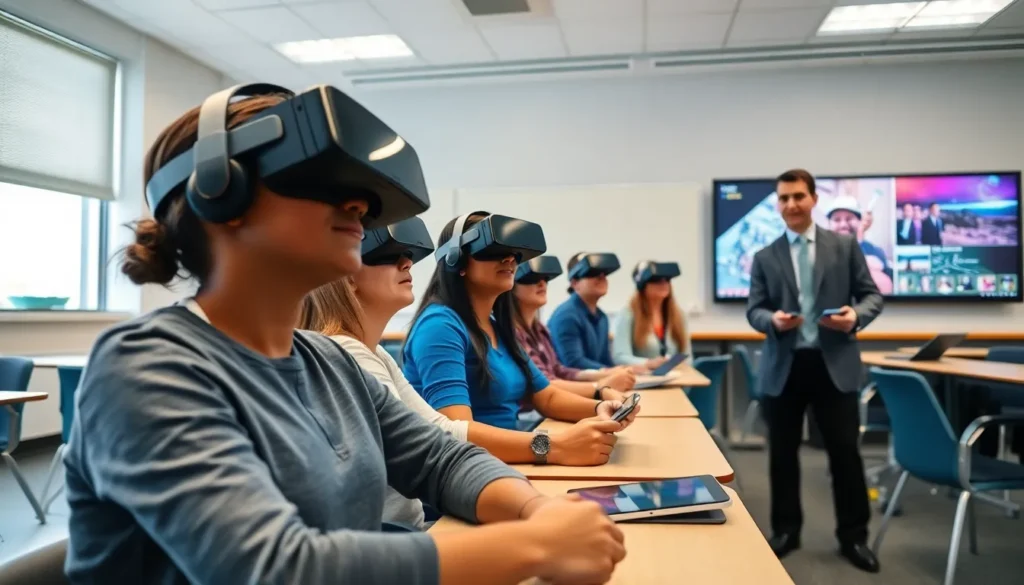Table of Contents
ToggleCommunication has come a long way from smoke signals and carrier pigeons: today, it’s all about rapid-fire messages and high-definition video calls. Remember when you had to yell across the street instead of sending a quick text? Yeah, those days are long gone. With emerging communication technologies evolving at breakneck speed, the ways we share information and connect with others are changing faster than most can keep up with. Let’s jump into this exciting world and explore how these advancements are shaping our interactions, and don’t worry, there won’t be any jargon that requires a PhD to decipher.
The Evolution of Communication Technologies

It’s astounding how communication technologies have evolved over the years. From the invention of the telegraph to today’s instant messaging apps, each step has drastically altered how people interact. Initially, messages sent via the telegraph revolutionized long-distance communication. Then, the telephone simplified voice communication, and television brought the world closer together, delivering news and entertainment directly into homes.
Today, we’re witnessing another monumental shift. Smartphones have integrated texting, voice calling, video chatting, and social networking into one simple device. Add to that the many apps that handle various communication tasks, and it’s all too easy to see just how interconnected the world has become. Now, let’s not forget about the next wave of tech emerging on the horizon.
Key Technologies Shaping the Future
Several key technologies are spearheading the evolution of communication. Let’s explore some of the most impactful advancements.
Impact of Artificial Intelligence on Communication
Artificial intelligence is turning the communication game on its head. From smart assistants that help manage schedules to AI-driven chatbots providing customer support, AI is streamlining communication across various platforms. These tech wonders analyze vast amounts of data to predict user behaviors and preferences, tailoring responses in a way that feels remarkably human. If you’ve ever had a conversation with a chatbot that knew just what you needed, you’ve experienced the magic of AI.
The Role of 5G in Enhanced Connectivity
5G technology is another game-changer. With significantly faster data speeds and enhanced capacity, it allows for smoother video calls and more reliable connections. Picture this: seamless virtual meetings where participants don’t freeze mid-sentence or lose connection at critical moments. That’s the promise of 5G. By enabling real-time data sharing and information exchange, it paves the way for more effective collaboration and communication across vast distances.
Virtual and Augmented Reality in Communication
Virtual and augmented reality are not just for gaming anymore: they’re transforming how people connect and collaborate. These technologies create immersive experiences that allow individuals to interact in shared virtual spaces.
Imagine attending a meeting where everyone is represented by avatars, sitting around a virtual table, no matter where they are in the world. This not only enhances collaboration but also makes remote work feel less isolating. Companies can leverage these tools for training, brainstorming sessions, and even client presentations, opening up a world of possibilities.
As VR and AR become more mainstream, they promise to redefine our communication landscape, bringing people together in ways previously only seen in sci-fi movies.
Trends in Remote Collaboration Tools
The rise of remote work has led to a surge in collaboration tools designed to bridge the communication gap. Platforms like Zoom, Microsoft Teams, and Slack are no longer just utilities: they’ve become essential in fostering team spirit and efficiency.
But it doesn’t stop there. The integration of project management features and virtual whiteboards has transformed how teams brainstorm and execute tasks. Organizations are now able to track progress and maintain clear communication channels, whether teams are in the same city or spread across continents.
As these tools evolve, they continue to incorporate functionalities like AI-based task assignment and real-time feedback mechanisms, further promoting collaboration in a hybrid working environment.
Challenges and Ethical Considerations
With rapid advancements in communication technologies come various challenges and ethical considerations. One pressing issue is data privacy. As platforms collect more personal data to provide tailored experiences, users are increasingly concerned about how their information is used and stored.
Also, the reliance on technology may lead to a breakdown of face-to-face interactions. People may find themselves communicating more through screens than with each other in person, which carries its own set of challenges for social skills and emotional intelligence.
Finally, there’s the dilemma of access to technology. Not everyone has equal access to the latest communication tools, leading to a digital divide that can affect education and job opportunities. As we forge ahead, it’s crucial to address these issues to ensure that emerging communication technologies benefit everyone.




